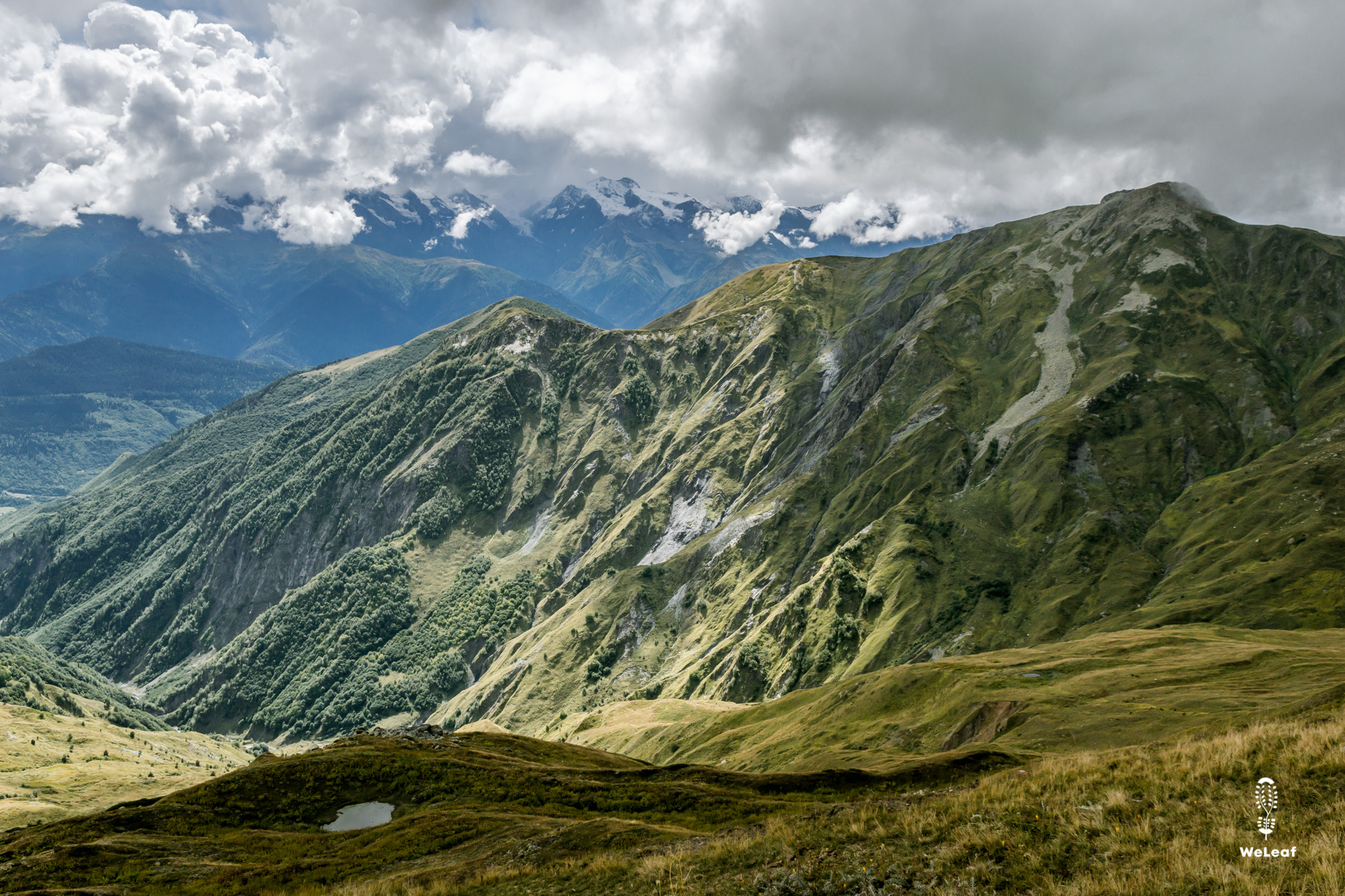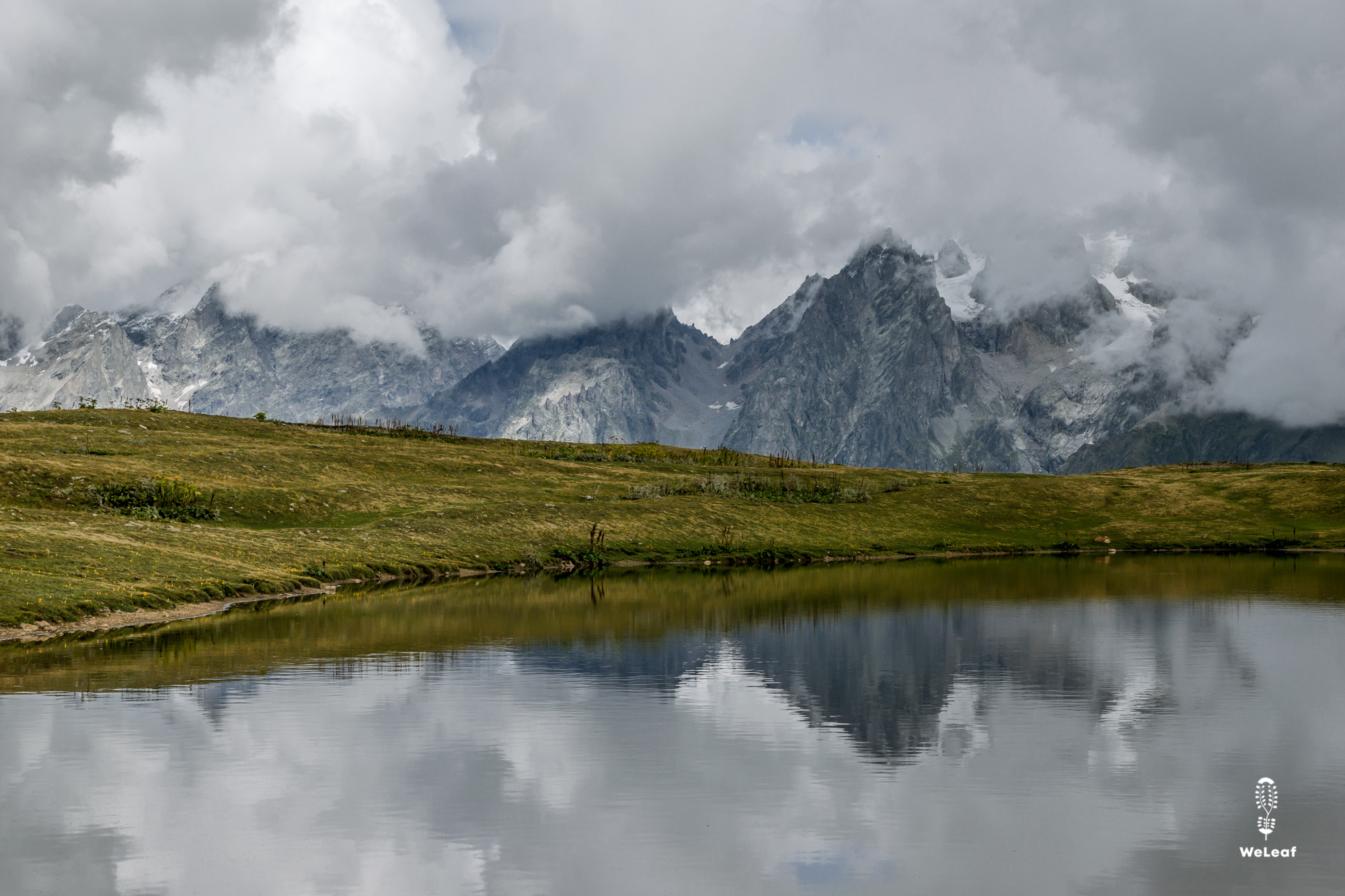
Two horses

Dodging cows
October 13, 2025
Gut feeling
October 14, 2025
Wednesday 10th of September - Mestia
We drop our heavy backpacks at the tourist office.
“The horses will carry our gear, so we don’t need to be too critical,” Olivier had thought.
But since we don’t have horses yet, we’re carrying everything ourselves — and suddenly, our packs feel way too heavy. Olivier feels the disappointment stacking up.
“This isn’t a place for horseback riding,” he says, “and here I am with all this unnecessary stuff in my backpack that I now have to carry.”
In our dreams, we imagined riding across open steppe, not standing here in steep mountains surrounded by 5,000-meter peaks. Olivier’s frustrated — he wishes he’d had time to prepare the trip properly. Then we would have known, he thinks. To him, it feels like we’ve come to the wrong place, maybe even the wrong country, to make our horseback dream come true.
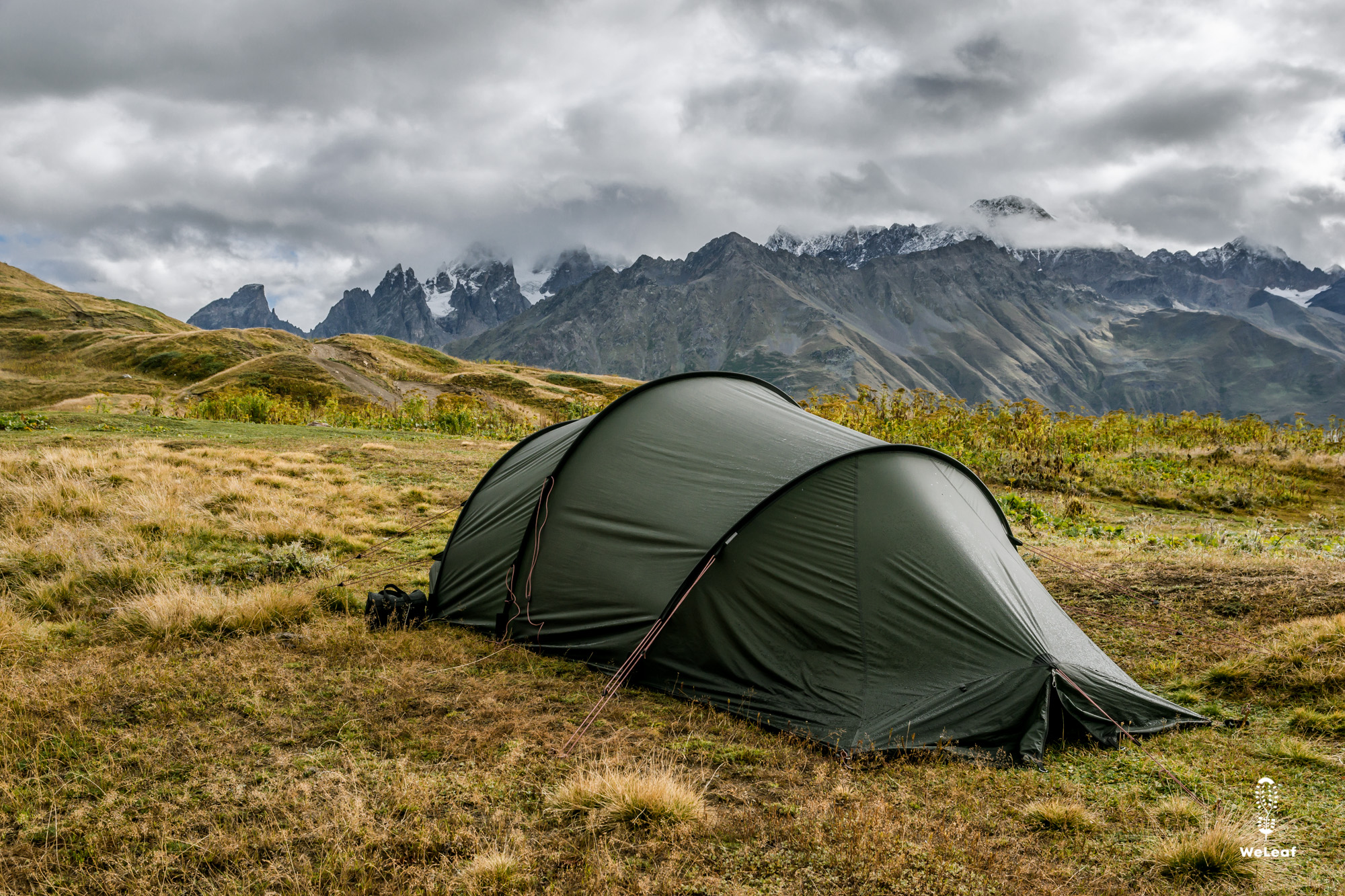
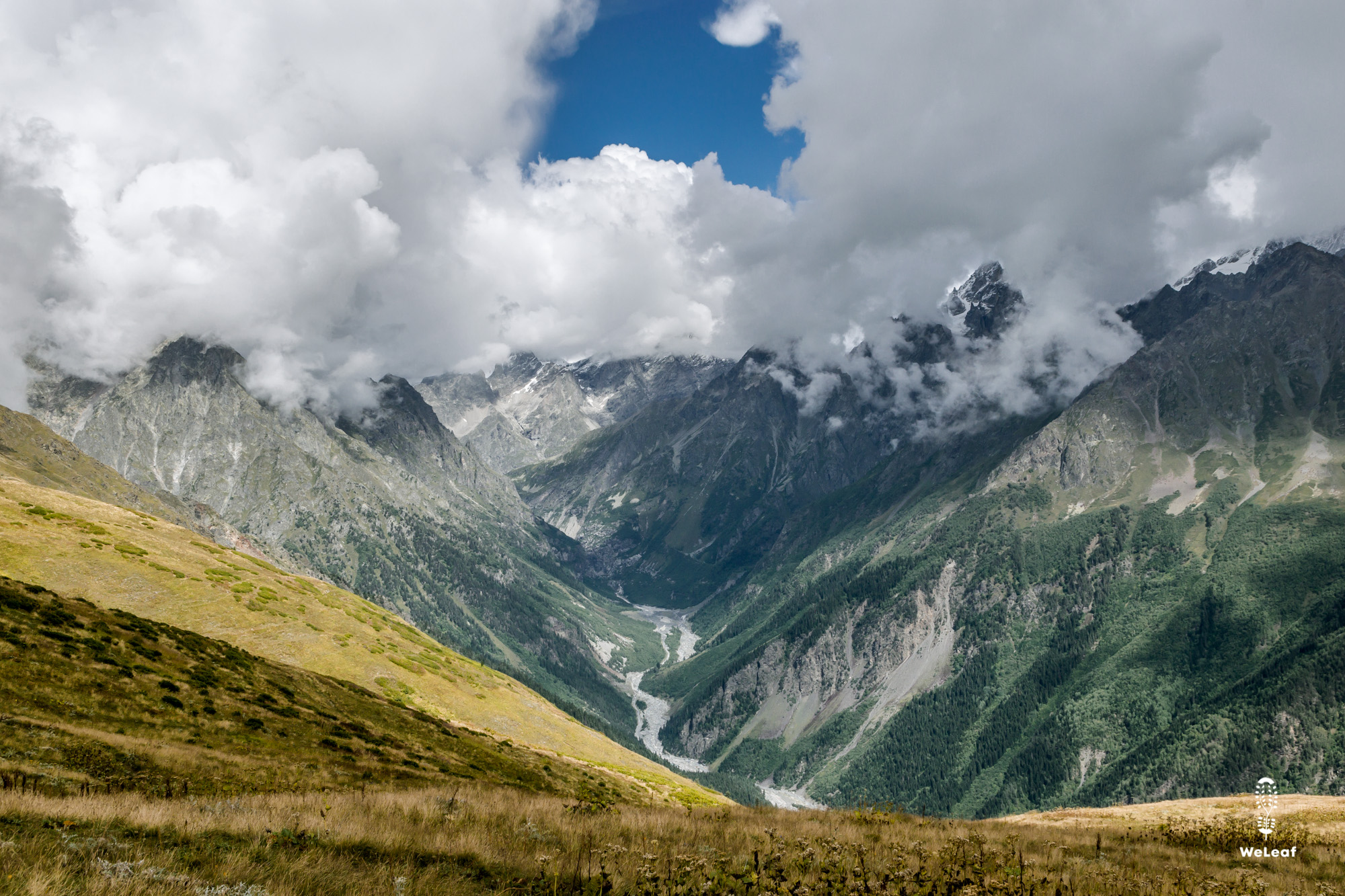
Undecisive
Zoë is surprised too — by the number of tourists and by how steep the mountains are — but she stays positive. The photos and videos she’d seen of the region were stunning, especially the ones with horses. Horse tourism is big here, after all. She talks to the woman at the tourist office and explains our plan. “We’d like to rent horses,” Zoë says. “No, not with a guide, and not just for one day.” We want to rent two horses for two weeks, and she shows the woman the route we’ve sketched out back in Kutaisi. The woman looks at us with surprise — our plan is clearly a bit different from the typical four-day hike from Mestia to Ushguli or the short horseback ride to a waterfall. Those are exactly the routes we don’t want to take. She doesn’t know much about the trails we’ve pieced together, but warns that it could be quite challenging, especially on horseback. We leave with a few basic maps — A3 sheets with some hand-drawn trails. Not exactly useful for navigation, but good enough for a rough overview.
Outside at a small table, we hesitate about what to do next.
“We just need to start,” Zoë says. “If we get moving, the answers will come.”
She knows from experience that getting out there always helps us shake off indecision. It’s already past 4 p.m. There’s a small village nearby where Zoë has a contact who organizes horseback tours. We decide to hike there — two long days on foot with our heavy packs. The plan is to join one of his short tourist rides for a couple of days and then ask if we can continue the journey on our own with his horses. There are a lot of ifs in that plan, but it gives us new energy. We lift our backpacks and start walking out of town — climbing a thousand meters up the mountain. As dusk settles, light rain starts to fall. We pitch our tent in the fading light. Zoë was right — despite the weight, we feel lighter already. This was exactly what we needed.
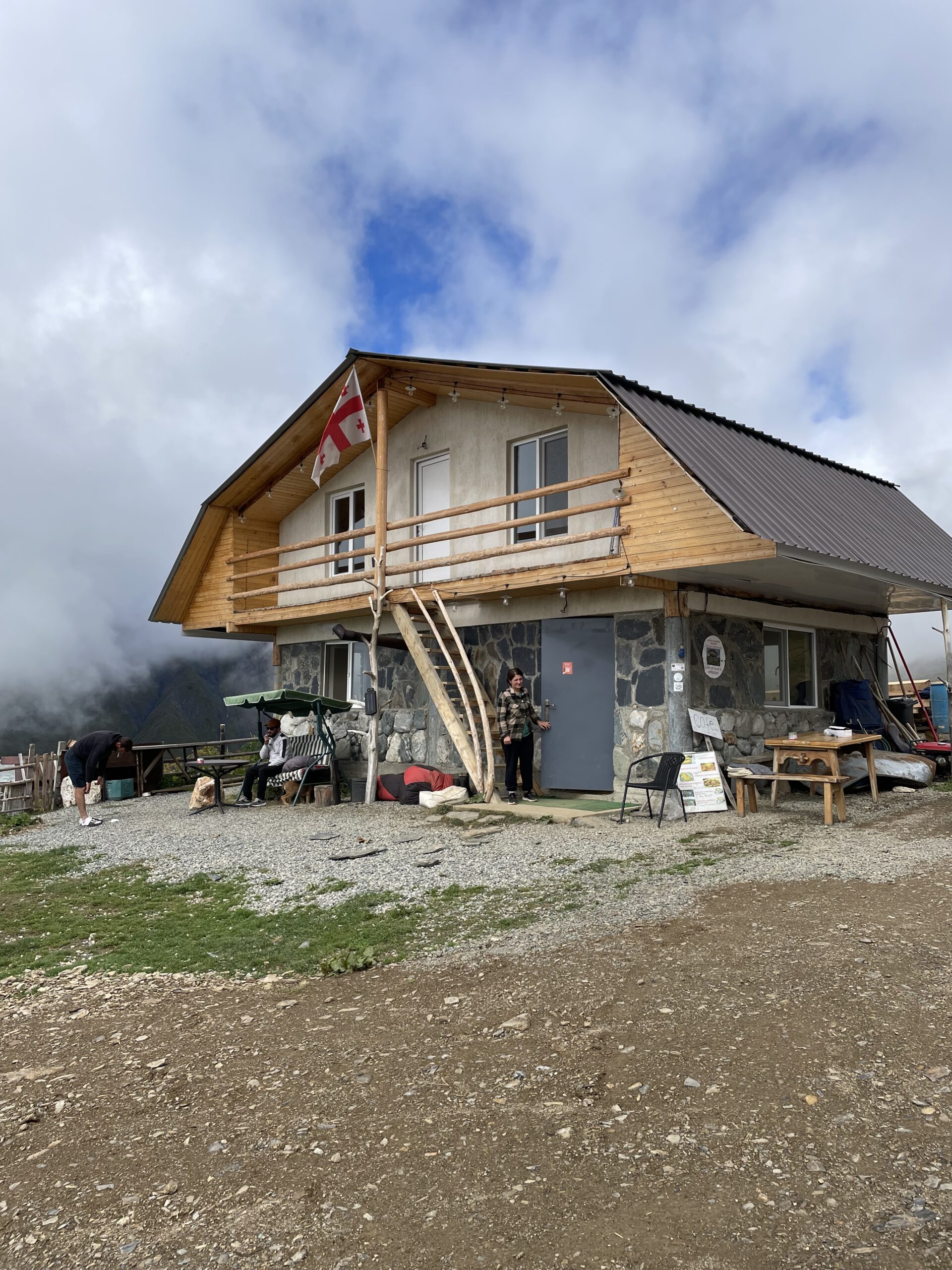
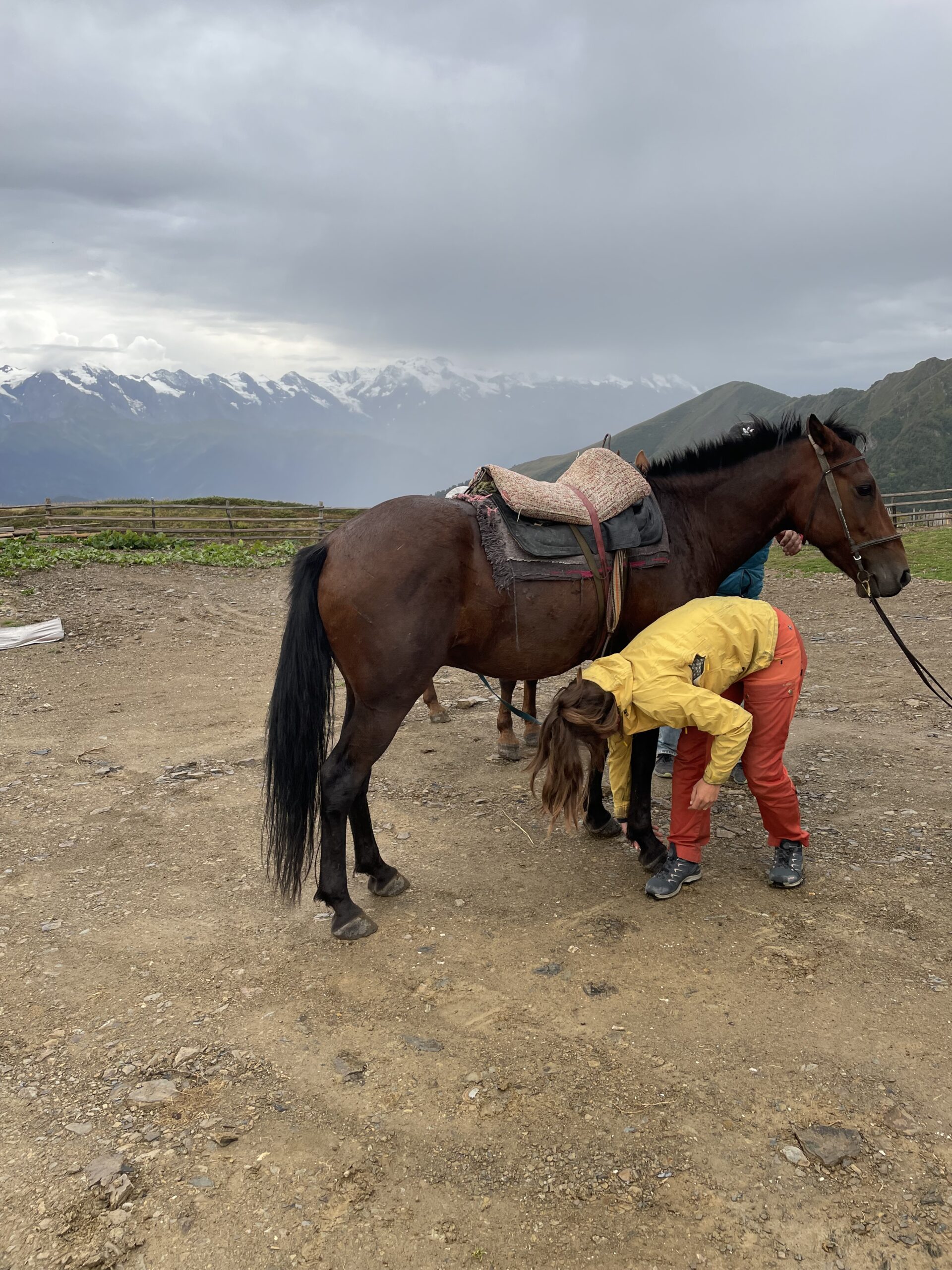
Two horses
The next morning, we wake up to a breathtaking view of the surrounding peaks. Just a few hundred meters away is a small guesthouse — a tiny mountain café, though we wonder who on earth makes it up here. Moments later, the first tourist vans appear, crawling up a road that’s nearly vertical and full of half-meter-deep ruts. Somehow, the jeeps and minibuses make it, their passengers’ faces pale with fear. Apparently, the three alpine lakes just above are a popular attraction.
“Maybe we could ask about horses here, just to practice?” Olivier suggests.
We walk to the small house where one man speaks a bit of English.
“We’d like to rent two horses for two weeks,” Zoë says. “We can pay 3,000 lari.”
The price is based on what the contact in the next village mentioned. We expect surprise or confusion, but the man just says, “One moment,” calls another man, who immediately takes out his phone. Ten minutes later he returns: “This afternoon someone will come with two horses.”
Now we’re the surprised ones. Can it really be this easy? Or did we just offer way too much money? Suddenly, nerves hit — we might actually have to decide today whether to buy or rent these horses and commit to this whole adventure.
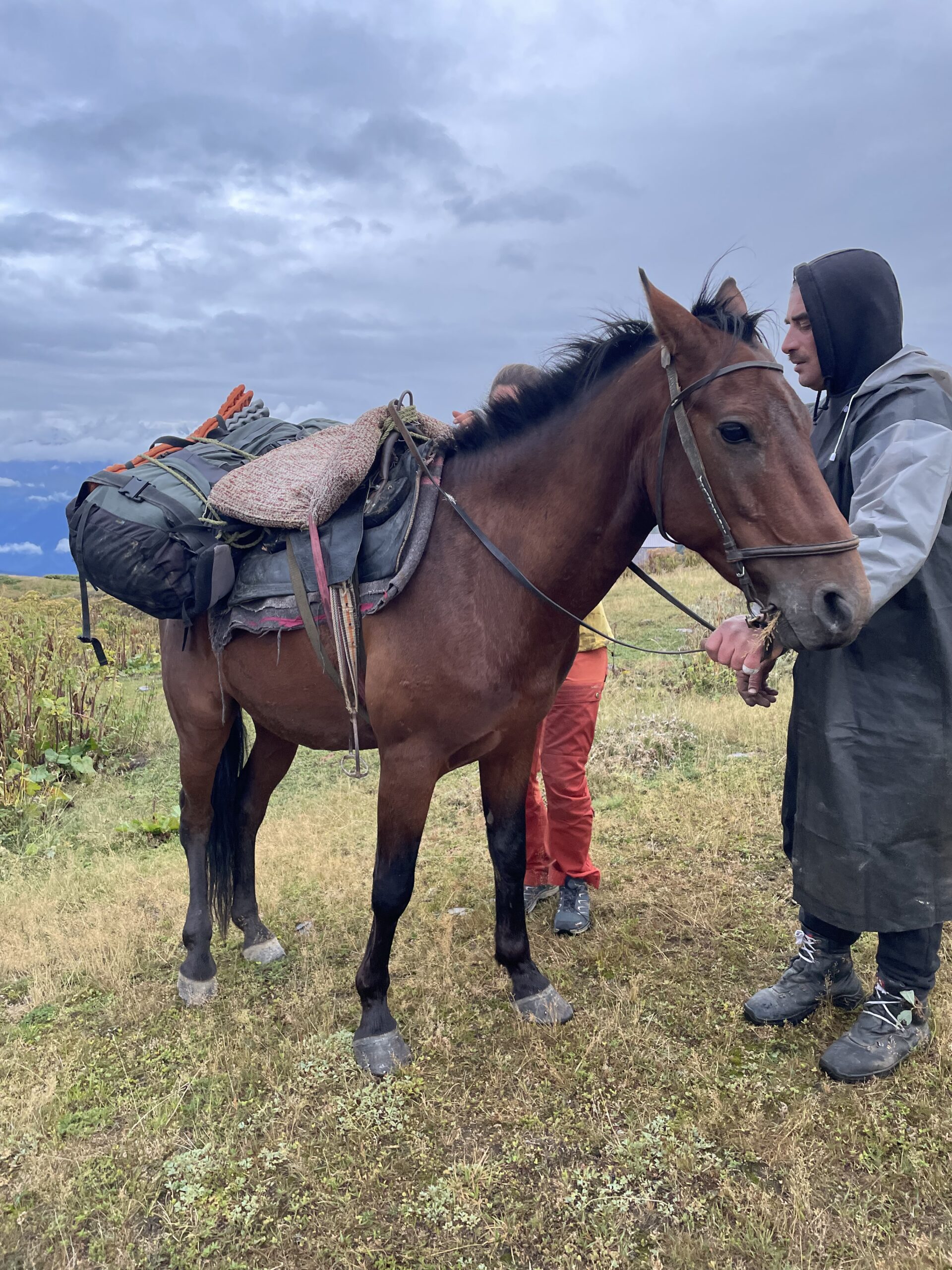
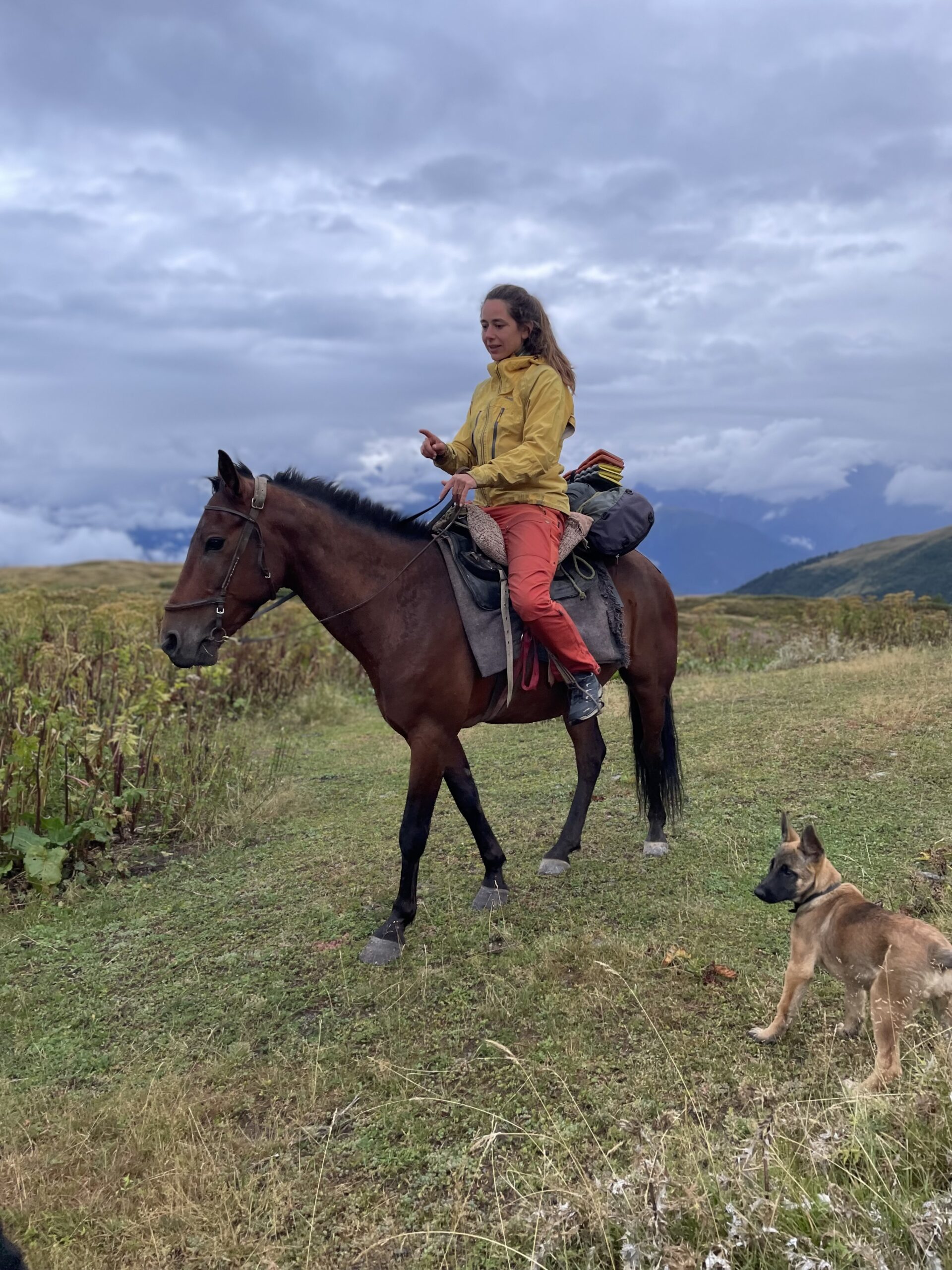
Georgi
At 5 p.m., a man rides up the mountain, two horses trailing behind him, tied to his saddle. Zoë’s hands shake from excitement. She’s the experienced rider between us, but she’s never led a trip alone before. She wants to appear confident and calm — maybe bluff a little. What matters most is that she trusts the owner and feels a connection with the horses. If those two things click, the rest will follow.
The man, whose name is Georgi, stops and Zoë approaches one of the horses. It suddenly spooks and kicks. The men nearby assure her it’s just the barking dog, but her heart is pounding now — and the horse can surely feel it too. She takes a few deep breaths, trying to project calm, to build trust. She checks the hooves, looks at its back, feels its skin. The horse looks healthy but cautious.
Go on, ride,” Georgi gestures, tapping the saddle.
Zoë adjusts the stirrups, takes the reins, and climbs on. She gives a gentle nudge with her heels — nothing. The horse doesn’t move an inch. It ignores all her usual signals. Georgi slaps the horse’s flank, and slowly, it starts to walk. Zoë rides off at a slow, steady pace. Then Georgi points at Olivier and the other horse.
Oh no, Olivier thinks. That wasn’t the plan. It’s been at least eight years since he last rode a horse, and he’d imagined starting more… gradually. But now it’s his turn to look confident. He swings into the saddle — and the horse actually starts moving on its own, calmly. Phew.

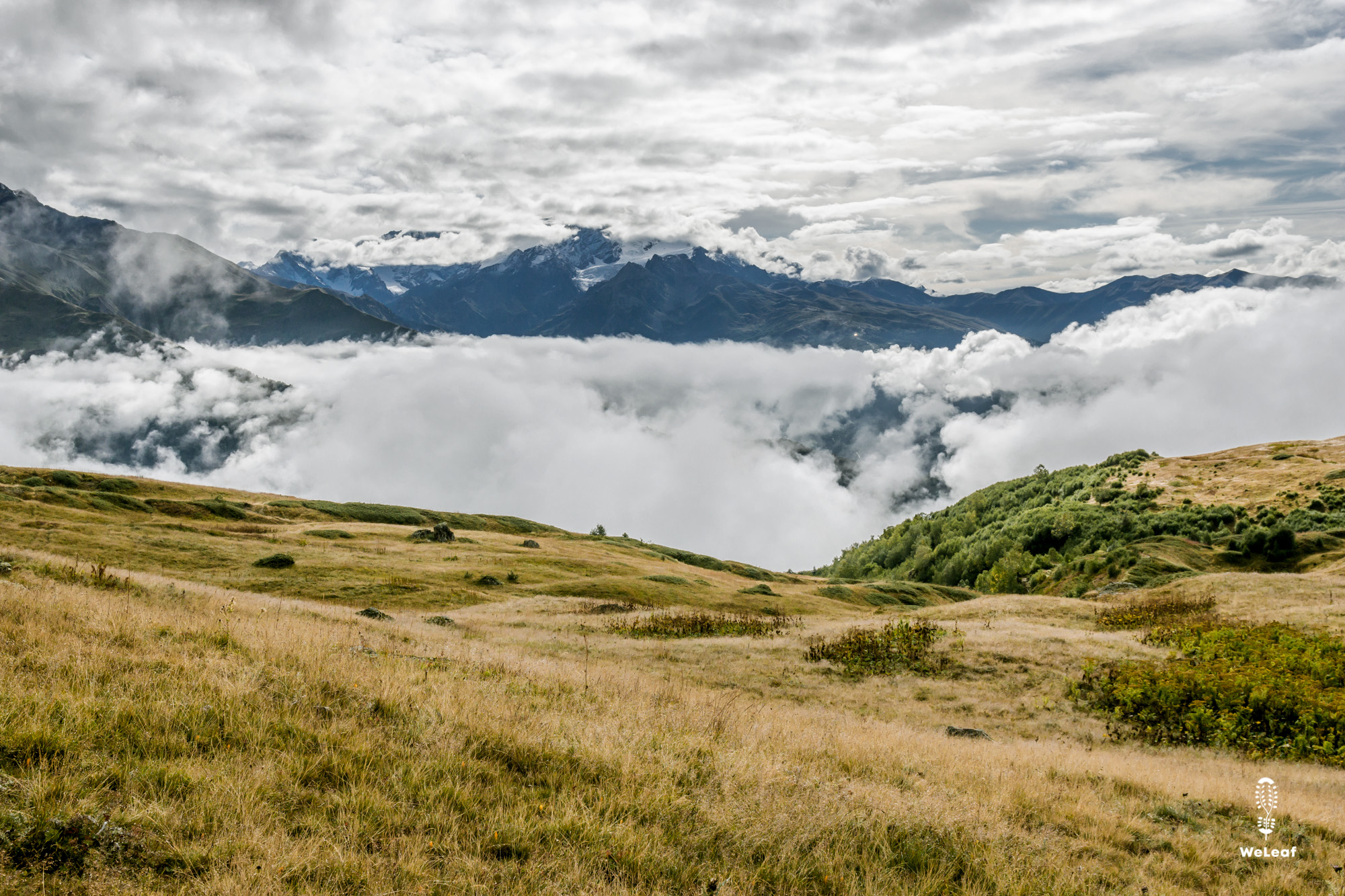
The horses are gentle, though they don’t respond to anything we say. We ride back toward Georgi, who shows Zoë how he gets his horse moving. She watches his body carefully, trying to see what cues he gives, but there’s almost no visible movement at all. When she tries again, the horse stubbornly refuses. “We’ve got two weeks to figure this out,” we tell each other. “The journey is the training.”
We bring Georgi to our tent — we want to test how the horses handle our backpacks strapped on. That’s clearly new for him too, but with some ropes and solid knots, we manage to balance the bags. It looks mostly stable. “This could work,” we say, especially if we can leave a few things behind with him.
Now we have to decide. Doubt and excitement rush through us.
“How does it feel?” Olivier asks.
“Like a crazy idea,” Zoë says, “but the good kind. Very WeLeaf.”
“Shall we do it?”
“We’re doing it!”
We agree to meet Georgi the next morning at his place in Mestia to pick up the horses. As he rides back down the mountain, we let the tension fall away.
We can hardly believe it — did we just find our two horses?
